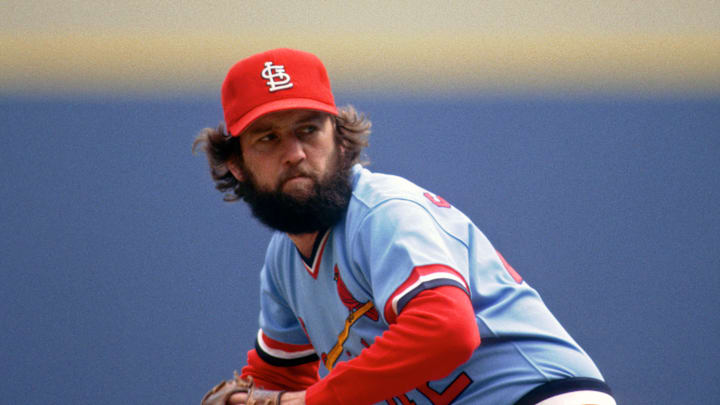5. Al Hrabosky (7.2 WAR from 1970-1977)
The " Mad Hungarian " is known for his wild personality as a player with his antics on the mound, staring down opposing hitters with his threatening handlebar mustache. He was defintely crazy, but he was also one of the most reliable late-inning relievers in Cardinals' history.
Hrabosky was taken in the first round by the Cardinals in 1969 back when there was a January draft and was in the big leagues a year and a half later. He did not become a mainstay on the Cardinals until 1973 when he had a 2.09 ERA and a 9.2 K/9 which was very impressive back then. In '74 he had a 2.95 ERA in over 88 innings of relief and finished in the top 5 in the Cy Young voting. His best season was in 1975 when he led the league in win percentage (13-3) saves (22) and had a 1.66 ERA over 97.1 innings. That season he only finished behind Padres' Randy Jones and Mets' Tom Seaver for the Cy Young, receiving two first-place votes, he was also in the top 10 in the NL MVP voting.
